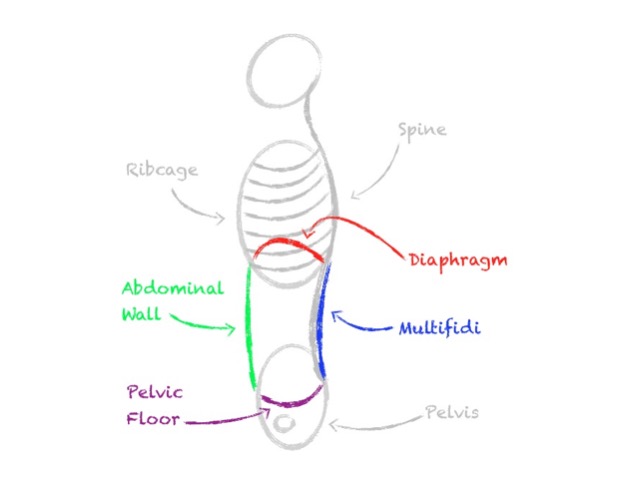Here is what we know:
• Mental stress manifests itself physically (as covered in our previous Wellness Wednesday)
• Physical manifestations often present in the form of muscle tension
• Muscle tension anywhere in the body does in fact impact the pelvic floor
Intra-abdominal pressure has been shown to be directly correlated to physical stress on the pelvic floor. The first step in managing abdominal pressure is to learn to sync the breath with belly, rib, and pelvic floor movement.
We see this connection as “proper breathing techniques = happy pelvic floor.”
The biggest hiccup (pun intended) is that most people aren’t taught how to breathe (because you don’t need to be taught), or they’re taught a sport-specific way to breathe. Ex: Olympic lifters using valsalva technique to brace before a lift. This is not wrong for that sport but know that sport-specific breathing techniques may increase abdominal pressure and contribute to pelvic floor problems.
Right now, let’s dissect the “breathing to manage pressures” topic in greater detail because it can be a bit ambiguous. We can’t see the pelvic floor and diaphragm working together, and up until this point in our lives our breathing strategy has worked for us since the primary goal of that system is to keep us alive (and chances are if you’re seeing this, you’re alive).
I’m not here to say you’re “breathing wrong”, but I am here to say there is an optimal way to breathe to minimize abdominal pressure and thereby minimize constant stress on pelvic floor muscles. Pelvic floor muscles can handle stress, but it’s that constant pressure that we want to minimize.
When we breathe, there is an influx of oxygen into our lungs. Oxygen takes up space, and the lungs are expanded in multiple directions, including into the space of the abdominal cavity. Physics tells us that we can’t change the volume of a container without changing the pressure so that gives us two options: we either accommodate for the volume change (by letting PFM relax downward), or we accept the increase in downward pressure. In individuals without PFD, the PF would naturally relax downward when we inhale; but if the pelvic floor is not mobile then we are just increasing the pressure without the change in volume.
The short version of this: inhale and let the pelvic floor relax downward. You may be able to feel this if you sit on a firm chair, lean slightly forward, take a big inhale into your belly, and feel those pelvic floor tissues gently drop into the chair beneath you.
This is a habit we want to build up slowly over time so that it becomes your default.



0 comments